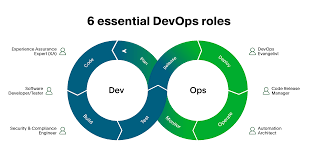info@gladsme.in
+91.8891968718
Demystifying DevOps: Transforming Software Delivery with Collaboration and Automation
Demystifying DevOps: Transforming Software Delivery with Collaboration and Automation

In today's fast-paced digital landscape, delivering high-quality software quickly and reliably is essential for staying competitive. DevOps, a portmanteau of "development" and "operations," has emerged as a transformative approach to software development and delivery. In this blog post, we'll delve into the world of DevOps, exploring its principles, practices, and the tools that enable organizations to streamline their software delivery pipelines.
Understanding DevOps:
At its core, DevOps is a cultural and organizational philosophy that emphasizes collaboration, communication, and integration between development (Dev) and operations (Ops) teams. Unlike traditional siloed approaches, where development and operations work in isolation, DevOps encourages breaking down these barriers and fostering a culture of shared responsibility and accountability throughout the software lifecycle.
Key Principles of DevOps:
Automation: DevOps advocates for automating repetitive tasks and manual processes wherever possible, enabling teams to focus on value-added activities. Automation reduces human error, increases efficiency, and accelerates the pace of software delivery.
Continuous Integration (CI): CI is a practice in which developers integrate code changes into a shared repository frequently, ideally multiple times a day. Each integration triggers automated tests to verify the integrity of the codebase, ensuring that issues are identified and addressed early in the development cycle.
Continuous Delivery (CD): CD extends CI by automating the deployment process, allowing teams to deliver software changes to production quickly and reliably. With CD, organizations can release new features, fixes, and updates to users with minimal manual intervention and downtime.
Infrastructure as Code (IaC): IaC is the practice of managing infrastructure (servers, networks, and other resources) through code and automation tools. By treating infrastructure as code, DevOps teams can provision, configure, and manage resources programmatically, enabling greater consistency, scalability, and repeatability.
DevOps Tools and Technologies:
A plethora of tools and technologies are available to support DevOps practices and workflows. From version control systems like Git and automation servers like Jenkins to container orchestration platforms like Kubernetes and configuration management tools like Ansible, these tools form the foundation of modern DevOps toolchains. By integrating these tools into their development and operations processes, organizations can streamline collaboration, improve efficiency, and accelerate time-to-market.
Embracing DevOps Culture:
While tools and technologies play a crucial role in DevOps, it's essential to remember that DevOps is as much about culture as it is about technology. Building a DevOps culture requires fostering open communication, trust, and collaboration across teams and departments. It involves breaking down silos, embracing experimentation and innovation, and fostering a mindset of continuous improvement and learning.
DevOps represents a fundamental shift in how software is developed, delivered, and maintained. By embracing collaboration, automation, and a culture of continuous improvement, organizations can overcome traditional barriers and deliver value to customers faster and more efficiently than ever before. Whether you're a startup, a small team, or a large enterprise, DevOps offers a path to greater agility, resilience, and innovation in an increasingly competitive market.
Related Blogs

The Importance of Data Structures in Software Development
Read More...
Exploring Machine Learning Algorithms: A Beginner's Guide
Read More...
The Evolution of Programming Languages: From Assembly to Rust
Read More...
Understanding Big O Notation: A Guide for Developers
Read More...Subscribe for our Newsletter
Subscribe to elevate your software game! Stay updated on the latest trends, coding insights, and exclusive promotions with our newsletter.
